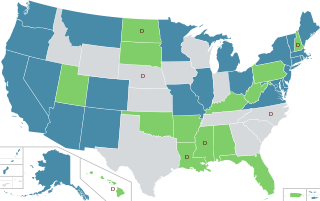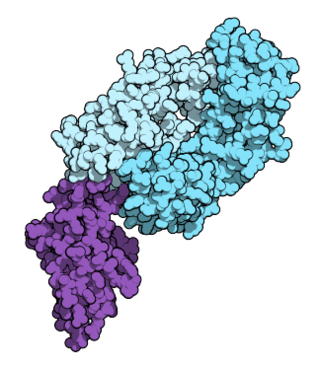The Burzynski Clinic is a clinic offering an unproven cancer treatment, which has been characterized as harmful quackery, and long-time Burzynski lawyer Richard Jaffe described a clinical trial as "a joke". It was founded in 1976 and is located in Houston, Texas, in the United States. It offers a form of chemotherapy called "antineoplaston therapy" devised by the clinic's founder Stanislaw Burzynski in the 1970s. Antineoplaston is Burzynski's term for a group of urine-derived peptides, peptide derivatives, and mixtures. There is no accepted scientific evidence of benefit from antineoplaston combinations for various diseases.

The United States Food and Drug Administration's Investigational New Drug (IND) program is the means by which a pharmaceutical company obtains permission to start human clinical trials and to ship an experimental drug across state lines before a marketing application for the drug has been approved. Regulations are primarily at 21 CFR 312. Similar procedures are followed in the European Union, Japan, and Canada.

Off-label use is the use of pharmaceutical drugs for an unapproved indication or in an unapproved age group, dosage, or route of administration. Both prescription drugs and over-the-counter drugs (OTCs) can be used in off-label ways, although most studies of off-label use focus on prescription drugs.

The Association of American Physicians and Surgeons (AAPS) is a politically conservative non-profit association that promotes conspiracy theories and medical misinformation, such as HIV/AIDS denialism, the abortion-breast cancer hypothesis, and vaccine and autism connections. The association was founded in 1943 to oppose a government attempt to nationalize health care. The group has included notable members, including American Republican politicians Ron Paul, Rand Paul and Tom Price.

Regeneron Pharmaceuticals, Inc. is an American biotechnology company headquartered in Westchester County, New York. The company was founded in 1988. Originally focused on neurotrophic factors and their regenerative capabilities, giving rise to its name, the company then branched out into the study of both cytokine and tyrosine kinase receptors, which gave rise to their first product, which is a VEGF-trap.
Abigail Alliance for Better Access to Developmental Drugs v. von Eschenbach, 495 F.3d 695, cert denied, 552 U.S. 1159 (2008) was resolved in early 2008 when the Supreme Court of the United States declined to hear the appeal. Their refusal left standing the appellate court decision, which said that patients have no right to "a potentially toxic drug with no proven therapeutic benefit."

The Prescription Drug User Fee Act (PDUFA) was a law passed by the United States Congress in 1992 which allowed the Food and Drug Administration (FDA) to collect fees from drug manufacturers to fund the new drug approval process. The Act provided that the FDA was entitled to collect a substantial application fee from drug manufacturers at the time a New Drug Application (NDA) or Biologics License Application (BLA) was submitted, with those funds designated for use only in Center for Drug Evaluation and Research (CDER) or Center for Biologics Evaluation and Research (CBER) drug approval activities. In order to continue collecting such fees, the FDA is required to meet certain performance benchmarks, primarily related to the speed of certain activities within the NDA review process.
Expanded access or compassionate use is the use of an unapproved drug or medical device under special forms of investigational new drug applications (IND) or IDE application for devices, outside of a clinical trial, by people with serious or life-threatening conditions who do not meet the enrollment criteria for the clinical trial in progress.
A glossary of terms used in clinical research.
An Emergency Use Authorization (EUA) in the United States is an authorization granted to the Food and Drug Administration (FDA) under sections of the Federal Food, Drug, and Cosmetic Act as added to and amended by various Acts of Congress, including by the Pandemic and All-Hazards Preparedness Reauthorization Act of 2013 (PAHPRA), as codified by 21 U.S.C. § 360bbb-3, to allow the use of a drug prior to approval. It does not constitute approval of the drug in the full statutory meaning of the term, but instead authorizes the FDA to facilitate availability of an unapproved product, or an unapproved use of an approved product, during a declared state of emergency from one of several agencies or of a "material threat" by the Secretary of Homeland Security.

In the United States, the use of cannabis for medical purposes is legal in 38 states, four out of five permanently inhabited U.S. territories, and the District of Columbia, as of March 2023. Ten other states have more restrictive laws limiting THC content, for the purpose of allowing access to products that are rich in cannabidiol (CBD), a non-psychoactive component of cannabis. There is significant variation in medical cannabis laws from state to state, including how it is produced and distributed, how it can be consumed, and what medical conditions it can be used for.

The United States Food and Drug Administration Modernization Act of 1997 (FDAMA) amended the Federal Food, Drug, and Cosmetic Act. This act is related to the regulation of food, drugs, devices, and biological products by the FDA. These changes were made in order to recognize the changes in the way the FDA would be operating in the 21st century. The main focus of this is the acknowledgment in the advancement of technological, trade, and public health complexities.

Nivolumab, sold under the brand name Opdivo, is a medication used to treat a number of types of cancer. This includes melanoma, lung cancer, malignant pleural mesothelioma, renal cell carcinoma, Hodgkin lymphoma, head and neck cancer, urothelial carcinoma, colon cancer, esophageal squamous cell carcinoma, liver cancer, gastric cancer, and esophageal or gastroesophageal junction (GEJ) cancer. It is used by slow injection into a vein.

Eric Brakey is an American politician in the U.S. state of Maine.

Brincidofovir, sold under the brand name Tembexa, is an antiviral drug used to treat smallpox. Brincidofovir is a prodrug of cidofovir. Conjugated to a lipid, the compound is designed to release cidofovir intracellularly, allowing for higher intracellular and lower plasma concentrations of cidofovir, effectively increasing its activity against dsDNA viruses, as well as oral bioavailability.
Catalyst Pharmaceuticals Inc. is a biopharmaceutical company based in Coral Gables, Florida. The company is developing medicines for rare diseases, including the phosphate salt of amifampridine for the treatment of Lambert–Eaton myasthenic syndrome (LEMS). The drug is referred to under the trade name Firdapse, which was approved by the FDA for approved use in children 6 years and older with LEMS in addition to the prior approval for use in adults with LEMS on November 28, 2018. Firdapse commercially launched in January 2019.

The Trickett Wendler, Frank Mongiello, Jordan McLinn, and Matthew Bellina Right to Try Act of 2017, also known as the Right to Try Act, is a United States federal law which allows experimental drugs to be administered to terminally ill patients who have exhausted all approved treatment options and are unable to participate in clinical drug trials. All eligible drugs must have undergone the Food and Drug Administration's (FDA) Phase I (safety) testing. The law seeks to increase access to experimental drugs by allowing patients, through their physicians, to request experimental medicines directly from drug manufacturers without involving the FDA. The FDA's expanded access program exists in parallel to the Right to Try Act. There is no legal obligation for drug manufacturers to provide their investigational products to patient who seek them.

Aid Access is a nonprofit organization that provides access to medication abortion by mail to the United States and worldwide. It describes its work as a harm reduction strategy designed to provide safe access to mifepristone and misoprostol for those able to become pregnant in the United States who may not otherwise have access to abortion or miscarriage management services. People are able to manage their own abortion with remote access to a physician and a help-desk for any questions. The website is available in English, Spanish, and Dutch.
Stem cell tourism, a form of medical tourism, is the internet based-industry in which stem cell procedures are advertised to the public as a proven cure. In the majority of cases, it leads to patients and families traveling abroad to obtain procedures that are not proven, nor part of a clinical trial approved by an authority like the Food and Drug Administration in the United States. These procedures have not gone through the vetting process of clinical research and they lack rigorous scientific support. Although for the general public, this advertising in glossy websites, may sound authoritative, for translational doctors and scientists this leads to the exploitation of vulnerable patients. These procedures lack the reproducibility, the rigor that is required for successful development of new effective medications. Although the term may imply traveling overseas, in recent years, there has been an explosion of "stem cell clinics' in the US which has been well documented. These activities are highly profitable for the clinic but no benefit for the patients, sometimes experiencing complications like spinal tumors, death, or financial ruin, all of which are documented in the scientific literature. There is a great deal of interest in educating the public and patients, families and doctors who deal with patients requesting stem cells clinics. In recent years, the FDA has become more active in overseeing stem cell clinics, taking a number of concrete steps including sending warning letters, putting out advisories, and in two cases filing suit in federal court to impose permanent injunctions on specific clinic firms.

Casirivimab/imdevimab, sold under the brand name REGEN‑COV among others, is a combination medicine used for the treatment and prevention of COVID‑19. It consists of two human monoclonal antibodies, casirivimab and imdevimab that must be mixed together and administered as an infusion or subcutaneous injection. The combination of two antibodies is intended to prevent mutational escape. It is also available as a co-formulated product. It was developed by the American biotechnology company Regeneron Pharmaceuticals.










